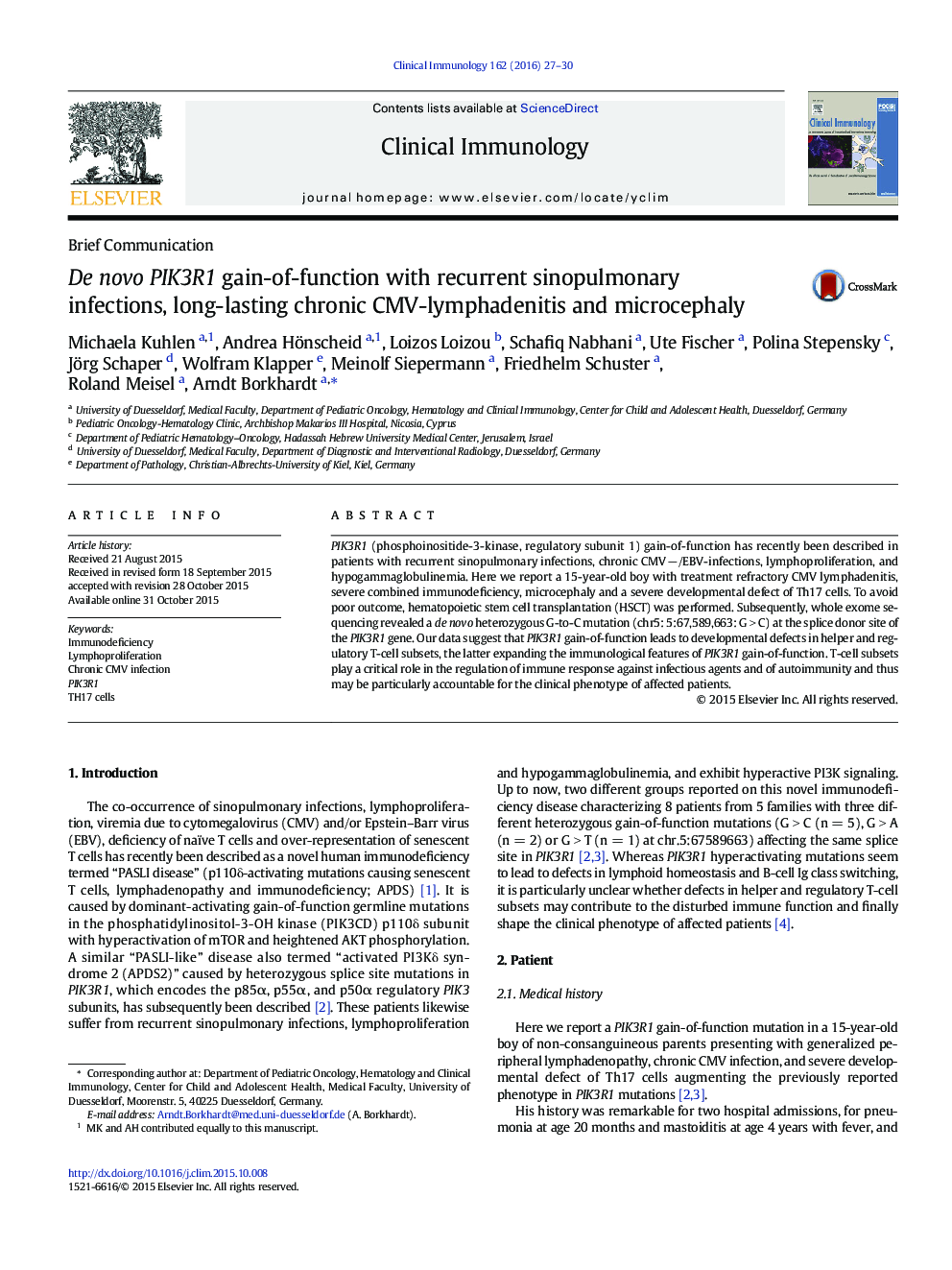| Article ID | Journal | Published Year | Pages | File Type |
|---|---|---|---|---|
| 6087006 | Clinical Immunology | 2016 | 4 Pages |
â¢PIK3R1 gain-of-function leads to sinopulmonary infections, chronic CMV â/EBV-infections, lymphoproliferation, and hypogammaglobulinemia.â¢A severe developmental defect of Th17 cells contributes to the disturbed immune function with immunodeficiency and autoimmunity.â¢Given the hyperactive PI3K signaling, PI3K targeted therapy, e.g. with mTOR inhibitors or PI3Kδ inhibitors, may represent a potentially effective treatment.â¢PIK3R1 gain-of-function mutations can successfully be treated with haploidentical hematopoietic stem cell transplantation with low toxicity.
PIK3R1 (phosphoinositide-3-kinase, regulatory subunit 1) gain-of-function has recently been described in patients with recurrent sinopulmonary infections, chronic CMVÂ â/EBV-infections, lymphoproliferation, and hypogammaglobulinemia. Here we report a 15-year-old boy with treatment refractory CMV lymphadenitis, severe combined immunodeficiency, microcephaly and a severe developmental defect of Th17 cells. To avoid poor outcome, hematopoietic stem cell transplantation (HSCT) was performed. Subsequently, whole exome sequencing revealed a de novo heterozygous G-to-C mutation (chr5: 5:67,589,663: GÂ >Â C) at the splice donor site of the PIK3R1 gene. Our data suggest that PIK3R1 gain-of-function leads to developmental defects in helper and regulatory T-cell subsets, the latter expanding the immunological features of PIK3R1 gain-of-function. T-cell subsets play a critical role in the regulation of immune response against infectious agents and of autoimmunity and thus may be particularly accountable for the clinical phenotype of affected patients.
